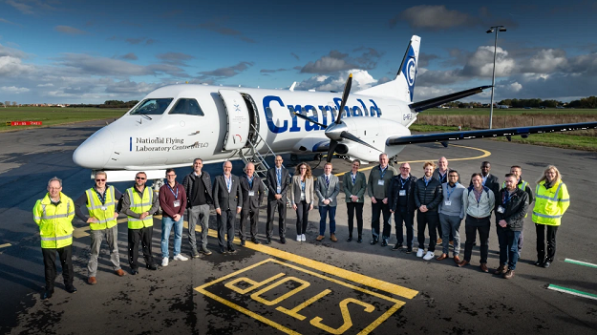
Viasat says that it has demonstrated a UK satellite-based augmentation system (UK SBAS) for the first time, showing how highly accurate GPS data can maximise safety and improve efficiency.
The test flight, flown from Cranfield Airport last month using the UK National Flying Laboratory Centre’s Saab 340B aircraft, showcased a UK-based SBAS that delivers more precise, reliable navigation data.
The UK is no longer part of the EU’s similar European Geostationary Navigation Overlay Service (EGNOS), following its exit from the European Union. While EGNOS can still be used for non-safety applications in the UK, the trial aims to provide a first step toward a complementary UK SBAS which can be used for critical safety of life navigation services across air, land and sea.
SBAS works by combining ground monitoring data with satellite connectivity to provide more reliable and more accurate navigational data, for applications such as aviation.
Viasat’s research with one regional flight operator indicated that close to 40% of flights cancelled due to weather could have gone ahead had UK SBAS been available for its fleet.
Around the UK, 19 airports had EGNOS procedures in place prior to leaving the European Union. In total, as many as 72 airports no longer have access.
With the aviation test complete, the system will now be tested in other transport applications, for example for rail, uncrewed aerial vehicles, or autonomous road vehicles.
UK SBAS generates a test signal overlaid on the US Global Positioning System (GPS), fully compliant with International Civil Aviation Organization (ICAO) standards, to enable assessment of more precise, resilient and high-integrity navigation for maritime and aviation users in UK waters and airspace.
The signal is being broadcast in coordination with the US Federal Aviation Administration (FAA), the European Space Agency (ESA) and the European Union Space Programme Agency (EUSPA). Broadcast capability for UK SBAS is being provided by Viasat’s I-3 F5 satellite.
With funding from the Department for Transport via the European Space Agency’s NAVISP programme, the trial is being completed by a Viasat-led team of companies in the UK, including Goonhilly Earth Station, CGI UK, GMVNSL, Ordnance Survey, Cranfield University, the Cranfield National Flying Laboratory Centre, and Pildo Labs.







